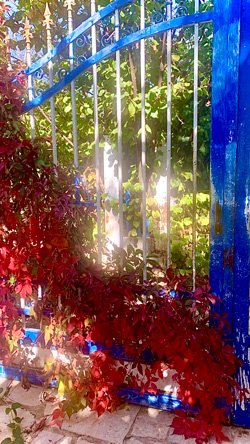The autumn also showcases colorful scenes. This clinging plant, also known as Victoria creeper, five-finger, or simply virgin ivy, is a woody vine native to eastern and central north America. Its leaves are usually made of five leaflets, hence the five-finger name. Be careful where you let the Parthenocissus quinquefolia grow: it can attach itself to pretty much anything and might damage your wall paints or even catch fire. It can grow in forests, hillsides, or fencerows. It is a climber that can also propagate as a ground cover and requires medium moisture, well-drained soils, and loves sun exposure. It can grow in the shade too, but it is its being in the sun that helps the process of its leaves turning a bright red on colder days by end of summer. It doesn't require much care and usually isn't susceptible to pests and diseases. It blooms by late spring and the flowers mature into small black berries by late summer. These berries are poisonous to humans. Birds and mammals can consume them though. Some native American tribes use the plant as a herbal remedy for diarrhea, difficult urination, swelling, and lockjaw. They also employ the bark and the berries to cure dropsy. They treat multiple other ailments with cures based on the leaves... What an admirable and pretty organism, right?

